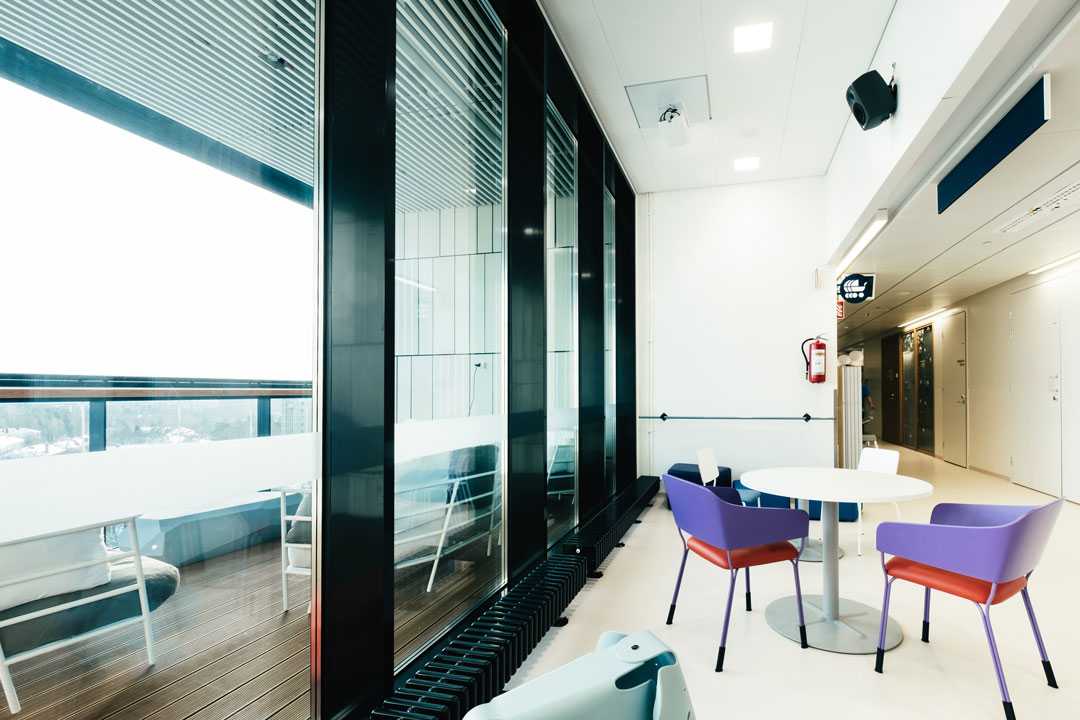Genelec helps create hospital soundscape
- Details

Part of the hospital’s innovative approach included the development of a building-wide soundscape to create a soothing sonic environment for patients and staff. The soundscape is fully networked, thanks in part to the use of 39 Genelec 8430A IP loudspeakers. The soundscape design was recently awarded the Grand Prix in the soundscapes and ambient sound category of the 2019 International Sound Awards (ISA) in Hamburg.
The idea was to create a soundscape based on the visual theme of each of the hospital’s eight floors. Inspiration was drawn mostly from the natural world as well as the much-loved Finnish Moomin stories. Antti Ikonen, head of Sound in New Media at Aalto university, and 10 of his MA students were responsible for the mammoth task of developing the content.
“First, the sound is generative, not looping, to avoid stress and ear fatigue,” explains Ikonen. “All the audio material is hosted in a single computer which generates and renders the soundscapes before feeding them out to each floor and location via the hospital’s IP network.
“The design and planning started before the building even existed,” he continues. “We discussed with the architects, doctors, electrical engineers, IT people, and Genelec how to implement this holistic technological system. The idea was not to fill the building with background music but to create a discreet, low-level ambience that is pleasurable and soothing for the kids but won’t disturb nurses or other staff.”
A crucial element of the design was speaker placement, which was determined at the very outset of the project and effectively designed into the building to facilitate cabling and infrastructure. The soundscape is delivered via 39 Genelec 8430A IP loudspeakers and 10 AIC25 in-ceiling loudspeakers distributed throughout the hospital’s lobbies and corridors from the underground car park all the way up to the top floor. They are specifically not located in proximity to the nurses’ workstations so as not to disturb hospital staff, and neither are they found in patients’ rooms, operating theatres, meeting rooms or any other space that has a specific function.
“The huge advantage of using IP networked loudspeakers is that there’s no need for traditional audio cables when connecting the loudspeakers to the sound source (in this case an Apple Mac Pro computer running the audio engine). Without IP audio, the sound system would have required hundreds of metres of audio cable and would have been vulnerable to many kinds of interference,” explains Ikonen.
Jon-Patrik Kuhlefelt, sound technician and digital audio specialist from the Sibelius Academy at Helsinki’s University of the Arts, also played an important role in the technical system design and content planning for the soundscape. “The heart of the system is the Mac Pro running a Max/MSP patch,” he confirms. “A Focusrite Rednet PCIeR audio interface in the Mac Pro feeds Dante streams to a BSS BLU-806DA DSP processor that is used mainly for muting all the loudspeakers in case of a fire alarm. From there, the outputs are fed to the Genelec 8430A IP loudspeakers via AES67. Finally, we have a Focusrite REDNET AM2 feeding the AIC25s.”
(Jim Evans)
















